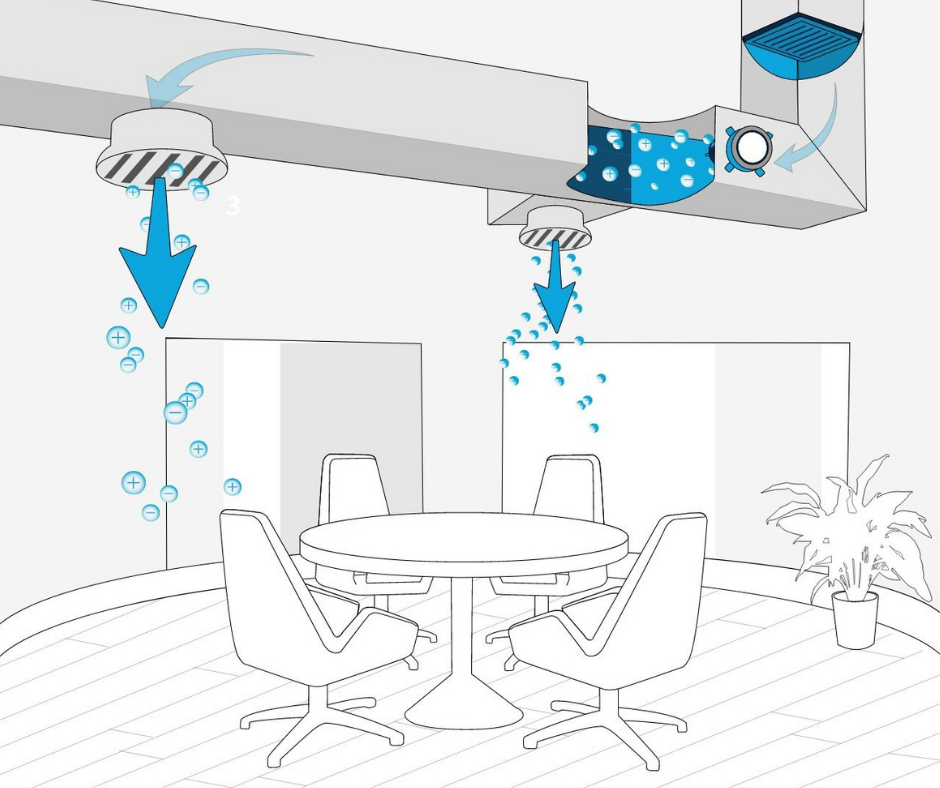ASHRAE's Manual to bipolar ionization for hvac engineers

The American Society of Heating, Refrigerating, and Air-Conditioning Engineers, Inc. (ASHRAE) featured a technical article in their November 2021 issue about what ions and ionization are.
What is an Ion?
An ion is a particle that has a positive or negative charge. Ions are formed when a molecule loses or gains one or more electrons. The particles in an ion can be either positively charged (+) or negatively charged (-). An anion (-) is an atom that has more electrons than protons and a cation (+) is an atom with more protons than electrons. You might be surprised to learn that we have been using ionization in the HVAC industry for over 100 years! The technical name is Electrostatic Precipitators. Ionization is the process by which an atom or molecule acquires a negative or positive charge by gaining or losing electrons to form ions, often in conjunction with other chemical changes.
Ions in the Air
It comes as no surprise that the beach and mountain tops provide the cleanest air when it comes to ions. Conversely, in the presence of air pollutants, the level of ions in our atmosphere decreases. The air within our buildings is often more polluted than the outdoor air, and naturally occurring ions are quickly depleted. The need for better air quality indoors is a growing concern for modern society. Pollution, the proliferation of harmful bacteria and viruses, and the lack of fresh air are becoming more and more noticeable and harmful to health in offices, schools, and homes.
Ions in Buildings
Modern bipolar ionization devices are now applicable and reasonably priced for use in more traditional HVAC systems serving residential and commercial buildings. An ionization device is a device for removing airborne particles by means of positive or negative ions, which attach to the particle and allow it to be more readily filtered. The ionization device should continuously operate to recirculate the air in a space.
Conclusion
ASHRAE consulted with the Centers for Disease Control and Prevention (CDC) regarding the use of bipolar ionization and received the following guidance: “CDC does not provide recommendations for, or against, any manufacturer or manufacturer’s product. While bi-polar ionization has been around for decades, the technology has matured and many of the earlier potential safety concerns are reportedly now resolved.” Several bipolar ionization products have been validated for zero ozone emissions and comply with ASHRAE Standard 62.1-2019.
Bipolar ionization is present in our outside air, as you've discovered, and current ionization solutions are safe and effective for airborne particles that could be damaging to human health. Building owners, designers, and occupants all stand to profit from the use of such products in improving indoor air quality.
// about the author

 Laiken Kuykendall
Laiken Kuykendall
Laiken is the Digital Marketing Specialist for the Hoffman Family of Companies. She learns more about the commercial/industrial HVAC industry each day and enjoys sharing her best findings here!













